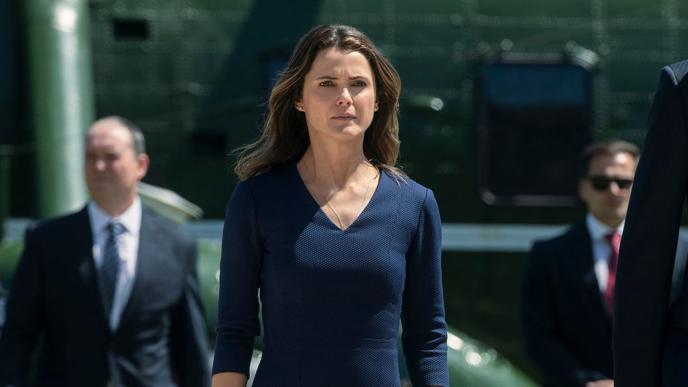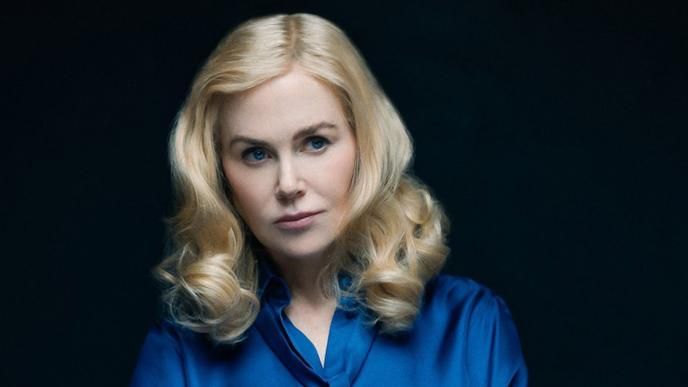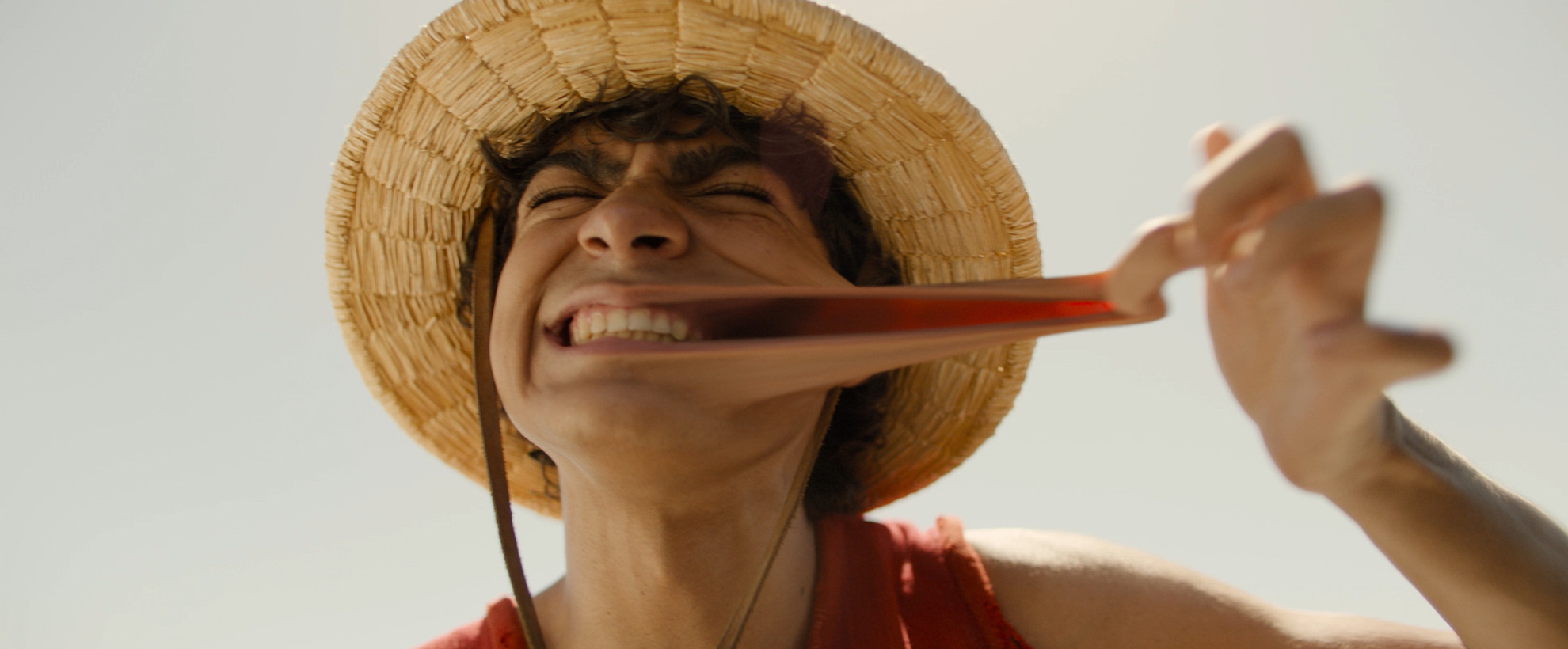
One Piece Saison 1
Framestore a réalisé des effets visuels essentiels pour l’adaptation en live-action de la célèbre manga et anime ONE PIECE de Netflix, couvrant une large gamme de tâches, y compris la conception et le design des personnages, les effets environnementaux, et surtout, donnant vie aux pouvoirs extraordinaires des « fruits du démon » pour le personnage principal Luffy et le méchant préféré des fans, Buggy.
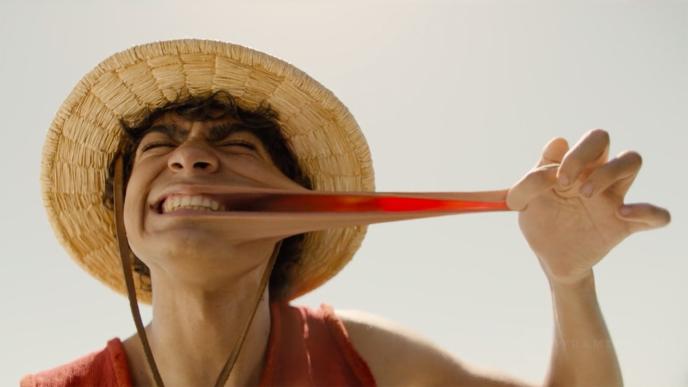
Basé sur la série de mangas la plus vendue de l’histoire du Japon, créée par Eiichiro Oda, ONE PIECE est une aventure légendaire en haute mer centrée sur la quête du protagoniste Monkey D. Luffy pour trouver le trésor légendaire, le One Piece, et devenir le Roi des Pirates.
Framestore a été chargé d'aider à réaliser les super-pouvoirs « gum gum » de Luffy, qui lui permettent de s'étirer comme du caoutchouc, les super-pouvoirs « chop chop » de Buggy le Clown, un pirate qui peut diviser son corps en morceaux flottants, et de livrer plusieurs tirs explosifs pendant la scène de combat de l’épisode 5, lorsque le navire du pirate Don Krieg est coupé en deux et que le personnage Mihawk tranche un boulet de canon qui lui est destiné. De plus, notre implication a également concerné la conception du canon sur l’épaule de Don Krieg, tandis que le département artistique a conceptualisé les adorables oiseaux marins porteurs de courrier, connus sous le nom de News Coo dans l’univers de ONE PIECE, que notre équipe d'effets visuels a animés.
Nous sommes arrivés sur ONE PIECE sans aucun temps de préparation. Après avoir lu les deux premiers scripts, notre premier appel a été adressé à John et Julie de Framestore, New York. Nous avions besoin d'un expert pour s'occuper des News Coo ainsi que des pouvoirs des fruits du démon de Luffy et Buggy. Après quelques semaines de préparation avec l'équipe de Framestore New York, nous avions des devis, des concepts artistiques en cours, et nous empruntions la même voie de succès que celle observée sur d'autres titres lourds en effets visuels.





Lorsqu'il s'agissait d'explorer les pouvoirs des Fruits du Démon de Luffy et Buggy, la directive du superviseur VFX Victor Scalise et du producteur VFX Scott Ramsey était de s'amuser avec ces pouvoirs, et notre équipe était prête à relever ce défi unique.
Tout au long du projet, nous avons traversé une série d'essais de développement pour trouver le bon équilibre entre le poids, la tension, la physicalité et la fantasticalité générale des pouvoirs "gum gum" de Luffy. Les membres extensibles en caoutchouc sont l'un des défis créatifs les plus complexes en VFX en raison de la corrélation limitée avec le monde réel, ce qui rend leur rendu encore plus difficile. L'évolution des attaques de Luffy pendant le développement témoigne de la collaboration et de la communication entre le superviseur VFX de la série et notre équipe. Scalise a décrit l'aboutissement des membres élastiques de Luffy comme le fruit de mois d'expérimentation, où nos artistes ont ajouté plus de courbure, de poids et de mouvement au "digidouble".
Le succès de l'élasticité de Luffy était tout informé par la performance brillante de l'acteur Iñaki Godoy, qui a fourni à l'équipe de nombreuses inspirations, apportant une physicalité fantastique au personnage à travers sa manière de bondir à l'écran, devenant ainsi l'incarnation réelle du personnage.
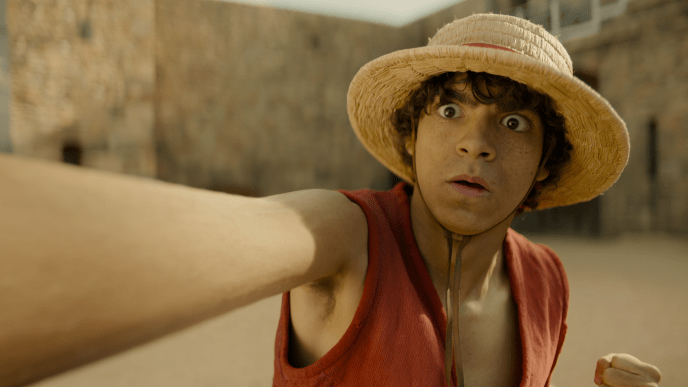

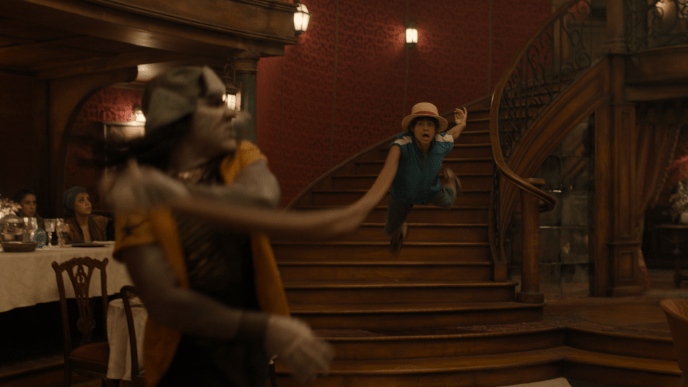
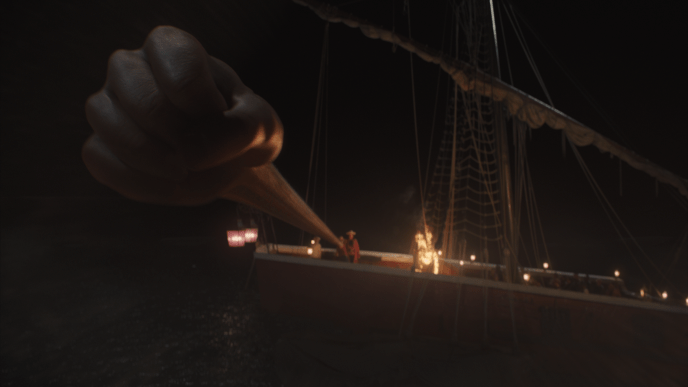
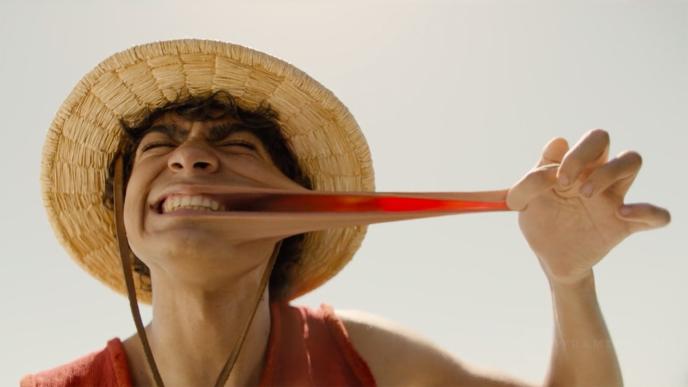
La production des pouvoirs de Buggy a également soulevé des questions sur la manière de les représenter de manière réaliste tout en conservant l’aspect fantastique propre à One Piece. Nous avons commencé par une série de tests et d'explorations pour trouver l'apparence exacte des membres coupés, ainsi que le degré optimal de "snapping" (l'effet de séparation rapide) et de "magnétisme" pour que les morceaux se séparent et se rassemblent de manière fluide. L'un des défis techniques les plus complexes du projet a été le développement d’un rig animé et d'un système procédural pour découper le corps, permettant aux animateurs de contrôler les "slices" dans leurs scènes en utilisant une version proxy, avant que ces animations ne soient prises en charge par les effets spéciaux et exécutées de manière robuste et guidée par l'art.
Tout comme pour Luffy, l'acteur de Buggy, Jeff Ward, nous a fourni une performance physique riche et dynamique sur laquelle s’appuyer, offrant une base solide pour rendre ses pouvoirs aussi vivants et crédibles que possible à l’écran. Son énergie et sa gestuelle ont été essentielles pour nous aider à capturer l’aspect à la fois exagéré et réaliste de la façon dont ses morceaux de corps se séparent et se reconstituent.
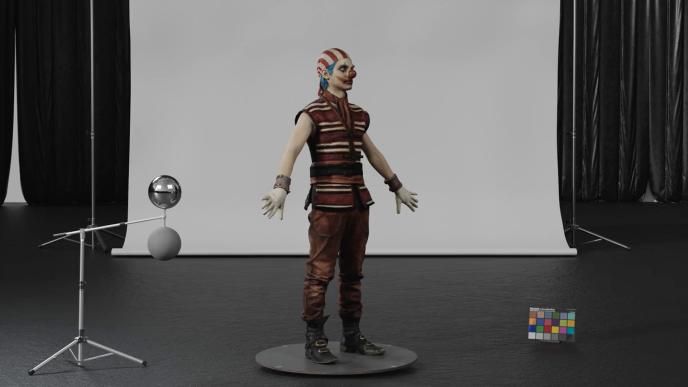
Succès dans le monde des adaptations live-action d'anime
Considérée comme l'une des adaptations live-action d'anime les plus réussies, la saison 1 de ONE PIECE est devenue la série numéro 1 dans plus de 84 pays après ses trois premiers jours de diffusion, enregistrant 18,5 millions de vues et une vague d'éloges positifs.
Le superviseur VFX Andy Zazzera commente que s'appuyer sur l'absurde a conduit au succès des effets visuels de la série, déclarant :
« Avec la pression qui accompagne le travail sur une œuvre légendaire comme ONE PIECE, il y a aussi cette crainte constante liée à la création de super-héros avec des pouvoirs en caoutchouc, qui historiquement ont reçu des réactions très mitigées. Étendre les membres humains est fondamentalement une chose étrange ; même si ces pouvoirs existaient dans la vraie vie, ils tomberaient sans aucun doute dans la vallée de l'étrange. Mais nous avons découvert que cela peut fonctionner si vous jouez pleinement avec son absurdité inhérente ! Et une grande partie de ce succès vient du fait que chaque personne impliquée dans cette série, à tous les niveaux, a manifestement travaillé dur pour donner vie à l'amusement et au cœur de l'œuvre originale de ONE PIECE. »
« Une fois de plus, Framestore a frappé un grand coup pour nous. Dès le début de la saison 1 de ONE PIECE, nous savions que nous devions faire appel à l'équipe de Framestore pour obtenir des effets visuels dignes d'un long-métrage. Leur conception brillante et leur exécution ont transformé ce qui était notre plus grand défi — les pouvoirs Gum Gum de Luffy — en un énorme succès. Ils ont pris quelque chose qui aurait pu avoir un rendu horrible et en ont fait une représentation visuellement cohérente. L'équipe de Framestore a également donné vie à Buggy. Comme vous pouvez le voir à l'écran, ils se sont amusés à le faire (et cela se voit dans l'amour qu'ils ont mis dans leurs animations). Ils ont vraiment capté la performance incroyable de Jeff et ont intégré un peu de lui dans chacune de ses parties séparées en CG.
Les News Coo, à l'origine, n'étaient censés apparaître que dans trois plans. Mais quand tout le monde a vu à quel point ils étaient formidables, ils ont commencé à apparaître de plus en plus. C'est le design de Framestore qui nous a donné envie de les revoir encore et encore. M. Oda voulait que le combat sur la plage avec Mihawk soit beaucoup plus excitant que la façon dont il avait été filmé. Alors nous avons couru vers Framestore avec très peu de temps pour le réaliser. Ils se sont immédiatement mis au travail et en ont fait l'une des séquences les plus palpitantes de la série. Merci Andy et John d'avoir accompli l'impossible une fois de plus. Framestore a dépassé nos attentes pour nous. C'est formidable de travailler avec une équipe aussi talentueuse qui s'amuse beaucoup à le faire. Je suis extrêmement reconnaissant pour l'esprit d'équipe et la collaboration que la direction et les artistes ont apportés à notre projet. Chacun a toujours une idée géniale que nous intégrons pour en faire un projet réussi. C'est tout simplement un immense plaisir de travailler avec l'équipe de Framestore. »
— Victor Scalise, Superviseur VFX

